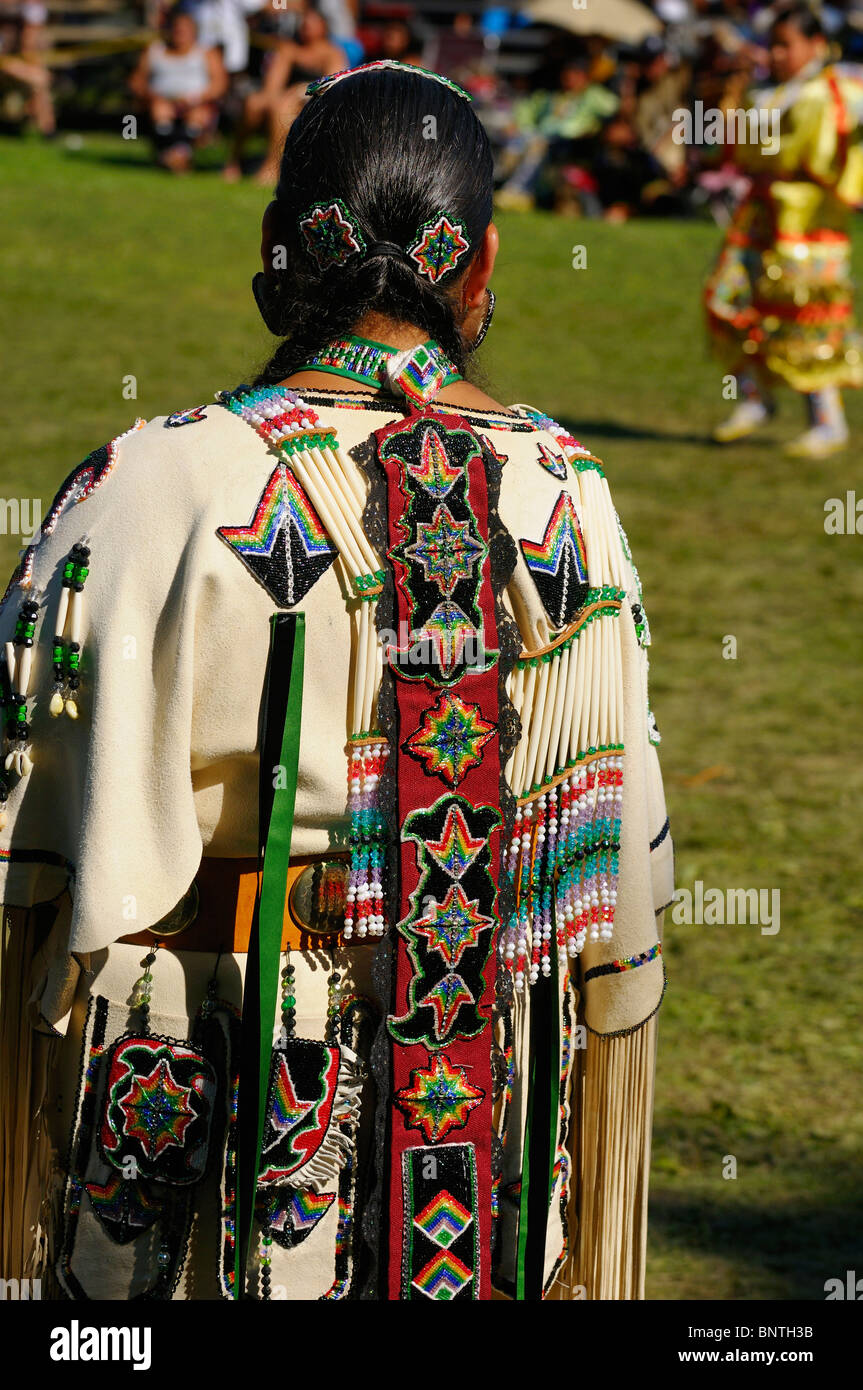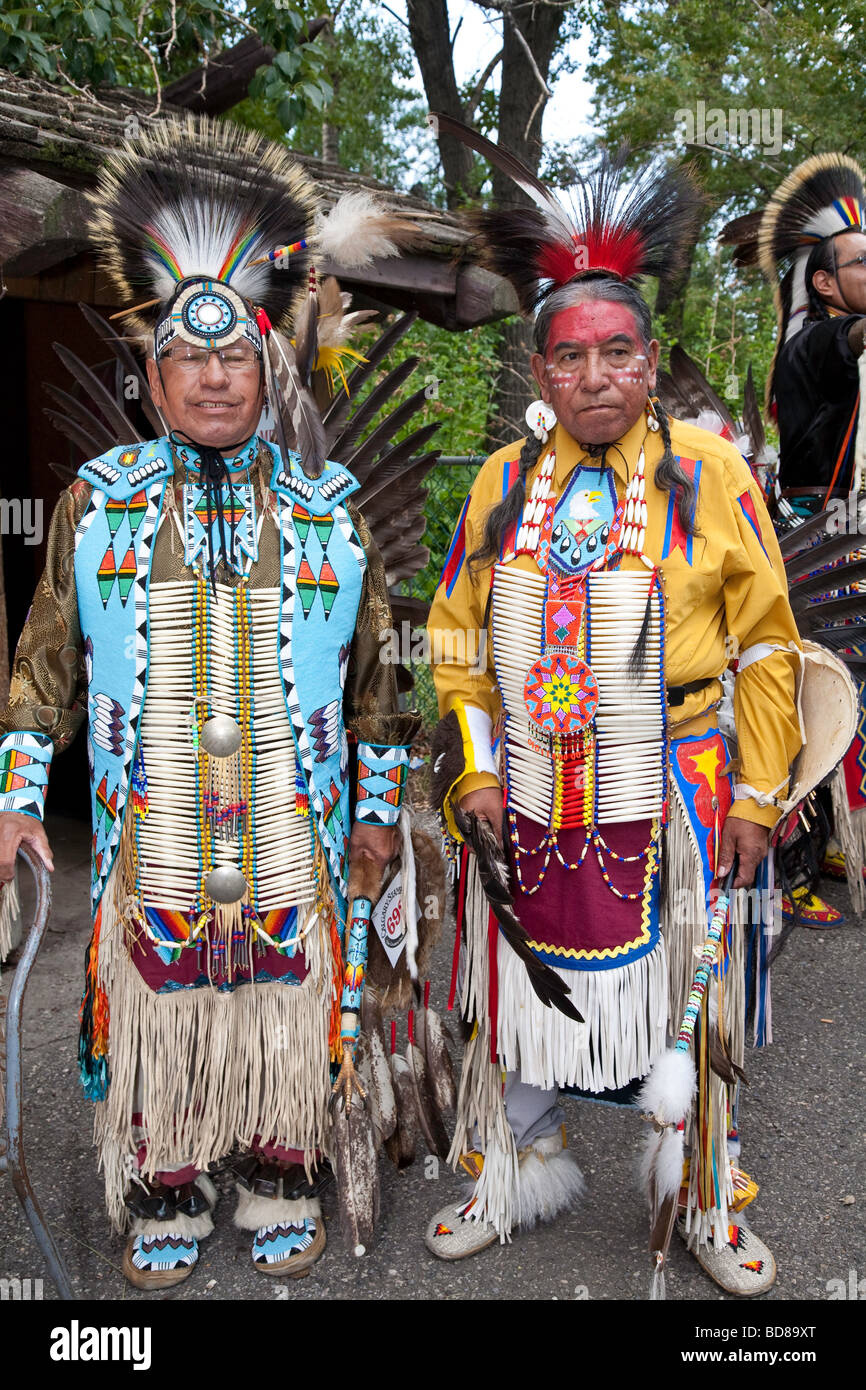
The Threads of Identity: A Deep Dive into Traditional Native American Clothing and Regalia Display
Traditional Native American clothing and regalia are far more than mere garments; they are profound expressions of identity, spirituality, history, and the intricate relationship between Indigenous peoples and their environments. To understand and appropriately display these cultural artifacts requires a nuanced appreciation of their materials, craftsmanship, symbolic meanings, and the ethical considerations surrounding their presentation. This article explores the depth and diversity of Native American attire, emphasizing the respectful and scholarly approaches necessary for their interpretation and exhibition.
I. The Fabric of Life: Materials and Craftsmanship
The foundation of traditional Native American clothing lies in the ingenious utilization of natural resources available within specific ecological zones. Animal hides, primarily deer, elk, buffalo, and moose, were meticulously processed into pliable buckskin or rawhide, providing warmth, protection, and a canvas for adornment. Furs from beaver, otter, and rabbit were incorporated for insulation and prestige. Beyond animal products, plant fibers played a crucial role: cedar bark was woven into capes and hats in the Northwest, yucca and cotton were used for textiles in the Southwest, and various grasses and reeds found utility across regions.
The artistry of crafting these materials was exceptional. Tanning hides was a labor-intensive process, often involving brain-tanning or smoke-tanning techniques that rendered the leather soft and durable. Dyes were derived from natural sources – berries, roots, minerals, and bark – creating a rich palette of colors. Embellishments transformed functional garments into masterpieces. Porcupine quills, laboriously flattened, dyed, and sewn or wrapped onto surfaces (quillwork), created intricate geometric and pictorial designs. Shells (especially dentalium and abalone), bone, seeds, and animal claws were incorporated into necklaces, breastplates, and other adornments. Following European contact, glass beads and trade cloth were adopted and integrated, not replacing traditional forms but expanding the artistic vocabulary and often enhancing existing designs with new vibrancy. Beadwork, utilizing techniques like lazy stitch, peyote stitch, and loom weaving, became a hallmark of many Plains and Woodlands cultures, showcasing incredible precision and creativity. Feathers, particularly from eagles and other significant birds, were reserved for items of great spiritual power and prestige, often reflecting a wearer’s achievements or connection to the spirit world.

II. Beyond Adornment: Function and Symbolism
Traditional Native American clothing served multiple critical functions, ranging from the purely practical to the deeply spiritual.
A. Everyday Wear: For daily life, clothing was designed for protection against the elements and ease of movement. Moccasins, tailored to specific terrains and climates, provided essential footwear. Leggings, breechcloths for men, and simple dresses or tunics for women formed the core attire. These items, while functional, often carried subtle markers of tribal identity through their cut, construction, or minimalist decoration.
B. Ceremonial and Spiritual Regalia: It is in regalia that the profound depth of Native American cultures is most vividly expressed. Regalia is not "costume" but sacred attire, imbued with meaning and power.
- Identity and Status: Regalia clearly articulated tribal affiliation, clan membership, family lineage, and individual status within a community. A war bonnet (like those of the Plains tribes), for example, was not merely a feathered headdress but a visual biography of a warrior’s deeds, each feather earned through acts of bravery and generosity. Similarly, specific patterns on a Chilkat blanket from the Northwest Coast could signify clan ownership and hereditary rights.
- Spiritual Connection: Many pieces of regalia facilitated communication with the spiritual realm. Medicine bundles, often containing sacred objects, herbs, and animal parts, were worn or carried for protection, healing, and guidance. Dance regalia, used in ceremonies and social dances (like those at powwows), often mimicked animal forms or incorporated elements believed to attract benevolent spirits or embody the spirit of the dance.
- Achievements and Narratives: Painted shirts, often made from buffalo or deer hide, served as narrative canvases, depicting a warrior’s battles, hunts, or significant life events through pictographic designs. Breastplates made of bone or shell offered both physical and spiritual protection, often symbolizing strength and resilience.

Gender roles were often reflected in clothing, with distinct styles and adornments for men and women, though both contributed to the creation and wearing of these items. Women were typically master tanners, quillworkers, and beadworkers, while men might specialize in painting or featherwork.
III. A Kaleidoscope of Cultures: Regional Diversity
The vast geographical expanse of North America fostered an incredible diversity in clothing and regalia, each reflecting the unique environment, resources, and cultural practices of its inhabitants.
- Plains Tribes (e.g., Lakota, Cheyenne, Blackfoot): Known for their elaborate use of buffalo and deer hide. Men’s painted war shirts, feathered war bonnets, and bone breastplates are iconic. Women’s dresses were often adorned with quillwork, beadwork, and elks’ teeth. The horse culture significantly influenced their attire, with decorated horse trappings.
- Southwest Tribes (e.g., Hopi, Navajo, Zuni): Utilized woven cotton (especially pre-contact) and later wool. Manta dresses, kilt, sashes, and ceremonial kilts and sashes are distinctive. Adornment often included turquoise, silver (post-contact), and shell. Navajo weaving, particularly of blankets and rugs, is world-renowned.
- Northeast/Woodlands Tribes (e.g., Iroquois, Anishinaabe, Wampanoag): Deerskin and moose hide were primary materials. Intricate floral and curvilinear designs in beadwork and quillwork are characteristic. Wampum belts, made from shell beads, served as records, treaties, and mnemonic devices.
- Northwest Coast Tribes (e.g., Haida, Tlingit, Kwakwakaʼwakw): Master weavers of cedar bark and mountain goat wool. Button blankets, Chilkat blankets (with their complex formline designs), and elaborate carved wooden masks and headdresses are hallmarks. Their clothing reflected the rich marine and forest environments.
- Great Basin/California Tribes (e.g., Paiute, Miwok): Often used plant fibers (yucca, tule) for woven skirts and capes, and rabbit fur for warm robes. Basketry techniques were often applied to clothing and adornment.
IV. The Evolution of Tradition: Continuity and Change
Native American clothing and regalia are not static artifacts but dynamic cultural expressions that have evolved over millennia. Pre-contact, all materials were natural and locally sourced. Post-contact, the introduction of trade goods such such as glass beads, wool cloth, metal tools, and commercial dyes profoundly influenced Native American artistry. Rather than simply adopting foreign styles, Indigenous artists integrated these new materials into existing aesthetic frameworks, creating new forms of expression that were distinctly Native American. For example, the vibrant colors of European glass beads allowed for new levels of detail and brilliance in beadwork, while wool stroud cloth provided a durable base for applique and embellishment. This adaptability highlights the resilience and innovation inherent in Indigenous cultures, demonstrating a continuous artistic tradition that embraces both heritage and evolution.
V. Displaying and Interpreting: Ethical and Scholarly Approaches
The display of Traditional Native American clothing and regalia, particularly in museums and public institutions, carries significant ethical and scholarly responsibilities. For too long, these items were presented as static "artifacts" of a bygone era, often stripped of their cultural context and spiritual significance. A truly educational and respectful display must counter these historical injustices.
A. Ethical Considerations:
- Repatriation: The Native American Graves Protection and Repatriation Act (NAGPRA) in the U.S. and similar legislation globally mandate the return of human remains, funerary objects, sacred objects, and objects of cultural patrimony to their lineal descendants and culturally affiliated Native American tribes. Displays must ensure that items subject to repatriation claims are handled appropriately.
- Consultation and Collaboration: Authentic and respectful display necessitates direct engagement with tribal communities. Indigenous voices, perspectives, and knowledge systems must be central to interpretation, label text, and overall exhibition design.
- Sacred Items: Objects of profound spiritual or ceremonial significance may not be appropriate for public display, or may require specific handling protocols, such as limited lighting or non-anthropomorphic mounts. Respecting tribal protocols for sacred items is paramount.
- Avoiding Stereotypes and Misrepresentation: Displays must actively challenge stereotypical portrayals of Native Americans as monolithic or solely historical figures. They should emphasize the diversity, vibrancy, and contemporary relevance of Indigenous cultures.
B. Curatorial Best Practices:
- Contextualization: Beyond presenting aesthetically pleasing objects, displays must provide rich cultural context. This includes explaining the materials’ origins, the techniques used, the symbolic meanings, the social function, and the historical trajectory of the piece.
- Provenance and History: Documenting the full known history of an object – its maker, original owner, how it was acquired, and its journey to the collection – adds layers of understanding and addresses historical power imbalances.
- Conservation: These often fragile materials require specialized conservation techniques to ensure their long-term preservation, including strict environmental controls for temperature, humidity, and light exposure.
- Multivocal Interpretation: Incorporating Indigenous languages, oral histories, and contemporary perspectives alongside scholarly research enriches the visitor experience and provides a more holistic understanding.
- Respectful Presentation: Mannequins used to display clothing should be neutral and non-anthropomorphic, avoiding the "ethnic mannequin" effect that can dehumanize or essentialize. Lighting should protect materials while highlighting details.
VI. Conclusion
Traditional Native American clothing and regalia are dynamic cultural texts, woven with threads of history, identity, and spirituality. Their display offers a unique opportunity to educate, inspire, and challenge preconceived notions about Indigenous peoples. By embracing ethical practices, fostering genuine collaboration with tribal communities, and committing to scholarly rigor, museums and cultural institutions can transform these exhibitions into powerful platforms for understanding, respect, and the celebration of living Indigenous cultures. These garments are not relics of the past but vibrant testaments to enduring resilience, profound artistry, and a continuing legacy of cultural expression.


